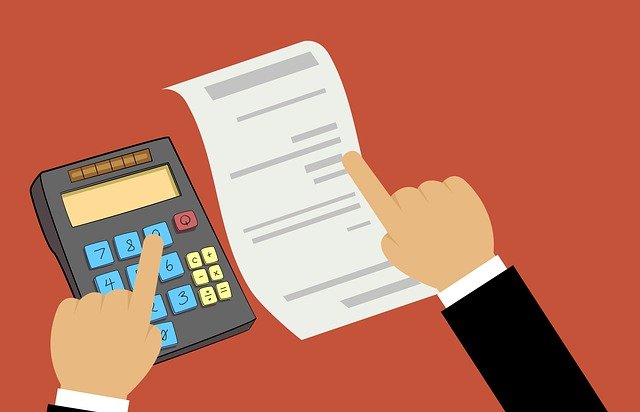

It is the dreaded time in the United States of America – tax season. Fraught with difficulties and frustrations, I know I am not alone in wishing the process were simpler. Trying to understand all of the different credits out there can feel impossible even for experts in the field.
That is why it is so important that we educate ourselves on how taxes work in the United States and what we need to do as we file. There is so much information out there, sometimes it can feel like we are drowning. I understand, which is why I am here to provide some guidance on the ERTC credit and how it works.
What are Taxes?
Before I get into the more complex aspects of this, I am going to explain what taxes are and why they are important. The first thing to keep in mind is that they are mandatory. As in you don’t get a choice as to whether you pay them or not.
A lot of scandals have happened with celebrities or famous figures (like Al Capone) because they were tax evaders. If you are curious about these requirements and would like to learn more, you can read about it on this page.
Both individual people and corporations must pay them. The reason for them is that they are used to fund public services and community works. This can be a variety of things. Some examples are schools or national defense.
What is it?

This is the big question. It is the Employee Retention Credit as seen under the CARES Act. If you would like to read more about the actual law, you can look here: https://www.irs.gov/newsroom/new-law-extends-covid-tax-credit-for-employers-who-keep-workers-on-payroll. While it does sound somewhat simple, there are a few things to keep in mind.
In practice, it is a fully refundable credit for any qualifying employers that equals up to fifty percent of employee wages. Keep in mind that it applies to any wages that were paid after March 12th, 2020, and before January 1st, 2021. This was extended into 2021 and ended with January 1st, 2022.
Who is Eligible?
Of course, this is somewhat more difficult to answer. The qualifications have shifted quite a bit as the months have progressed. After all, the COVID-19 pandemic has been a developing incident that has created fluctuating conditions in politics, economics, and our personal lives.
First of all, you need to be doing business in 2020 or 2021 to qualify. This does include tax-exempt organizations if they meet the criteria. You can read more about that criterion on this page if you are wondering but let me break it down for you.
First up are companies who experienced a loss of profit or decline in revenue during those calendar years. You need to be able to prove that you experienced a fifty percent decline in gross receipts compared to your 2019 figures.
How Does it Work?
Unfortunately, this is where things start to really get hairy. A lot of things go into this process, and it can be hard to know where to start. You may want to begin with determining what the maximum you can receive from this credit is. More details on this can be found here: https://www.investopedia.com/what-is-the-employee-retention-credit-and-how-to-get-it-4802575.
The maximum number of wages that can be refunded is equal to fifty percent up to five thousand dollars for 2020 and seven to fourteen thousand dollars in 2021. There are some gray areas here depending on special circumstances, but this is the simple answer.
Now comes actually claiming it. There is inevitably a lot of paperwork involved, and if you look on the IRA’s website, it can feel very confusing. They provide paragraph upon paragraph of highly technical terms with very little explanation, even on their Frequently Asked Questions page.
Something good to keep in mind is that this is separate from the PPP (Paycheck Protection Program) loans. The only aspect of the PPP that could influence the credit is that you cannot utilize any PPP funds that were forgiven to calculate your refund. That is the only big thing you need to keep in mind here! Thankfully, businesses who claimed PPP funds are now also able to receive this credit.
Why Does this Credit Exist?
This all stems back from the Coronavirus Aid, Relief, and Economic Security Act that was released in late March of 2020. It was a care package worth two point two trillion dollars and was intended to help mitigate the economic devastation that was sweeping the United States as the coronavirus spread.
It was a multi-pronged approach, as was appropriate for the circumstances. After all, we have not seen anything like COVID-19 in modern times. While we have had other outbreaks of diseases, this level of danger and tragedy was last seen in the influenza pandemic of 1918 (commonly called Spanish Flu).
What most of us remember about CARES was the direct economic impact payments. I know that in my household, they were truly a life saver. We were struggling after losing our jobs because we didn’t work at essential businesses – everything was shutting down and it felt like hope was lost.
Additional unemployment aid was included in the package due to the discrepancies between how states handled it. The Pandemic Unemployment Assistance was available for a variety of workers who normally would not receive benefits. Most notably, it went out to gig workers whose bookings were suffering due to the lockdown.
Of course, aid was not only given to individuals, but businesses as well. At first, the aim was mostly to assist small businesses who were experiencing disproportionate negative effects due to the pandemic.
One of the biggest aspects of this was encouraging employers to retain their employees. Mass layoffs were happening all over the country (and even the world, to some extent) as companies had to shut their doors. However, with the aforementioned Paycheck Protection Program loans, small businesses had options to continue covering payroll.
Final Thoughts
The CARES Act gave American citizens a lot to be thankful for during the height of the coronavirus pandemic, despite some people’s complaints that it was not enough. The ERTC is just one aspect of this wide spanning legislation that helped keep so many people safe and well.
If you are still feeling unsure about filing for the credit, it is probably best to consult professionals. There are plenty of people out there who do taxes for a living and are willing to assist. Start researching your options now! Don’t wait until it is too late – you might miss out.





